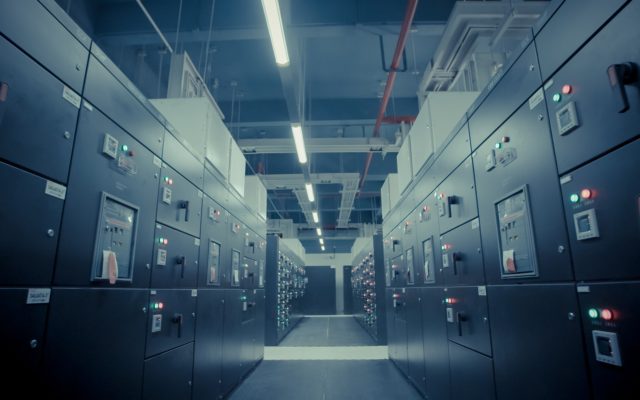If you’ve been following the technological disruption of business lately, you know there’s a lot of talk about data collection, storage technology, privacy laws and what future data centers will look like. As you’re preparing your own business for the rest of 2018 and the beginning of 2019, there are some major trends you should be aware of as you explore your business’s data infrastructure needs and consider how best to scale your operation.
- If Anything, the ‘Death’ of the Data Center Is Severely Overstated
You may have heard that in-house and custom-built data centers will soon go the way of the dinosaurs. By 2021, says Gartner, half of all global corporations will have gone “all-in” on cloud computing and SaaS rather than maintain a physical data center or share one with other companies. But there are many reasons to believe this progression won’t be the case.
For starters, there’s all the “Friends Don’t Let Friends Build Data Centres” swag at all the AWS conferences. Amazon’s business model revolves around data centers as a service, and it’s worried about its business model, clearly. What does that tell us? It tells us they’re concerned about companies building their own data centers instead of leasing access to Amazon’s.
It also tells us that some popular theories — like pronouncing 2014 the year cloud services “killed the data centre” — haven’t taken into account the increasing affordability of storage. For years, some in the industry have maintained that the cost of cloud computing and SaaS could in many cases be dramatically higher than maintaining an in-house data center over which you have total control and oversight.
If you have the capital to make such a move, it’s something to consider in 2018 as you think about your data needs and the degree to which you’re comfortable relying on infrastructure somebody else has built, maintains and offers you access to on a subscription basis.
- You’ll Have to Decide Whether to Share or Build Your Data Center
In 2018 and beyond, small and large companies alike will have more — and more affordable — options at their disposal than ever when it comes to building and eventually expanding one or more data centers across their organizations. Do you have one built or share an existing data facility with other “colocating” companies? There’s more to consider than you might realize.
For some companies, a small corner in a larger shared data center is all they’ll ever need. For others, the reasons to build a new one include insufficient capacity or security at the shared location, limited scalability for growing businesses, outdated hardware, shakeups over IT or maintenance costs and more.
Of course, uptime is a consideration too. If you need a Tier 4 data center to maintain mere minutes of downtime per year, that’s a bigger investment than a Tier 1 center, which would probably suffice for a majority of smaller businesses.
- Even Domestic Data Centers Are Beholden to Some International Laws
Much of the data collected today is for business, operational, marketing or compliance purposes. But we now live in a world where, for better or worse, the collection of even marginally personally identifiable information is a politically and ethically complicated matter. With the recent passage of the GDPR (General Data Protection Regulation) in the European Union, many are wondering how data centers and data storage practices beyond the EU will be influenced.
The truth is, there are several immediate implications. Whether it’s an in-house data facility or the use of a cloud service, most modern businesses collect and keep moderately or highly sensitive payment and device information about customers and potential customers. Under EU law, international companies doing business with, or marketing to, EU citizens will have new compliance requirements if, for example, American companies are collecting data on EU citizens for marketing purposes.
If anything, this change lends credence to the idea that physical data centers aren’t going anywhere. According to Intel, the increasingly stringent (and complicated) world of international data laws means software-based protection isn’t enough. It’s going to take hardware-level security to provide the kind of peace of mind that laws like GDPR were designed to deliver. That might just mean taking control over your future data center needs literally from the ground up.
- Data Centers Might Get More Decentralized
Even as companies continue to invest in their own data facilities, 2018 will likely be the year we see many of these facilities give way to far less centralized “edge” networks.
From healthcare to manufacturing, computing power and data storage are both being spread out across micro-data centers, data hubs and satellite business locations. Based on current trends, industry experts believe the current 10 percent of enterprise data being stored and processed on edge networks will rise to 50 percent by 2022.
This increase means the technology we rely on today is still going to be relevant tomorrow and the day after that. It also means that we’ll need to think differently about how it’s deployed and dispersed and even about how our very business infrastructures are laid out as we scale up.
- Say Goodbye to Platters (and Their Environmental Footprint)
Spinning hard drive platters will likely be on life support beyond 2018. If anything, this development is the least surprising one on this list.
Transitioning from hard drives to solid state drives (SSD) in data processing centers comes with a significant reduction in environmental footprint and ownership costs. Over three years, some HDD-to-SSD transitions yielded three-year savings of almost $80,000 per data center in energy saved through lower electricity consumption and easier cooling.
What’s the point of all this? While the physical design of the data center and even its market share (as cloud computing grows in popularity) are subject to change, the need for accessible, agile data facilities definitely isn’t going anywhere. In 2018 and beyond, small and large businesses will have to come to terms with how they’re using data, where in the world they’re collecting it from and whether or not to build and maintain bespoke facilities for their data needs.
Are you planning on exploring automation in the future? The IoT? Adding smart functionality to your equipment? All of it takes data — and someplace to keep it.
Article by channel:
Everything you need to know about Digital Transformation
The best articles, news and events direct to your inbox
Read more articles tagged: Big Data, Featured, Internet of Things







